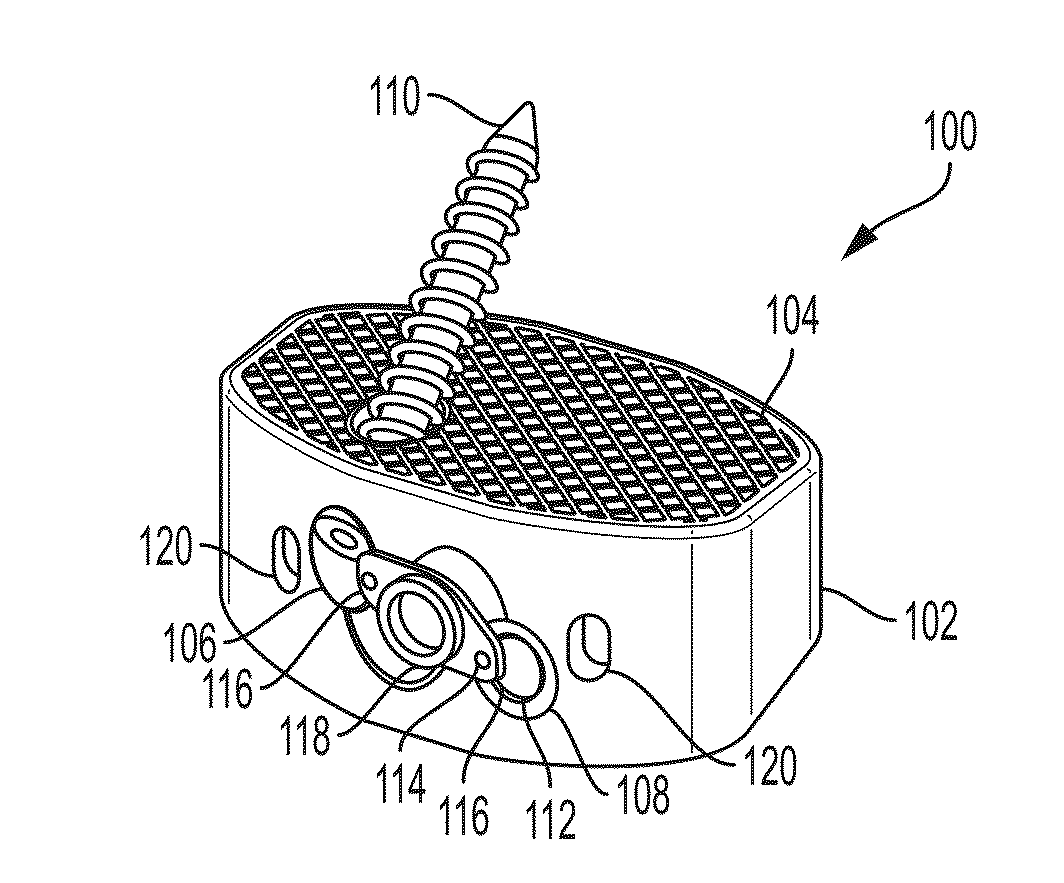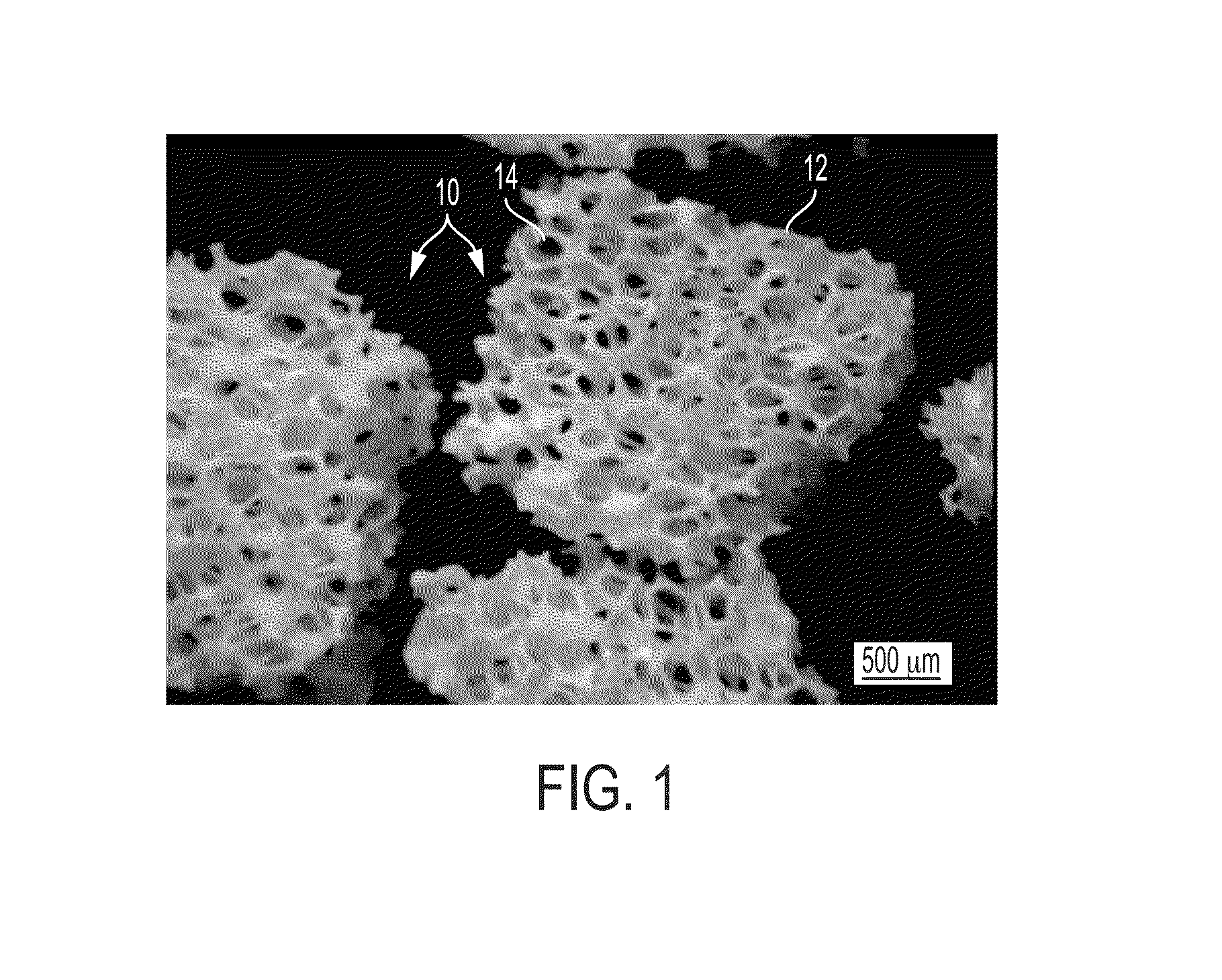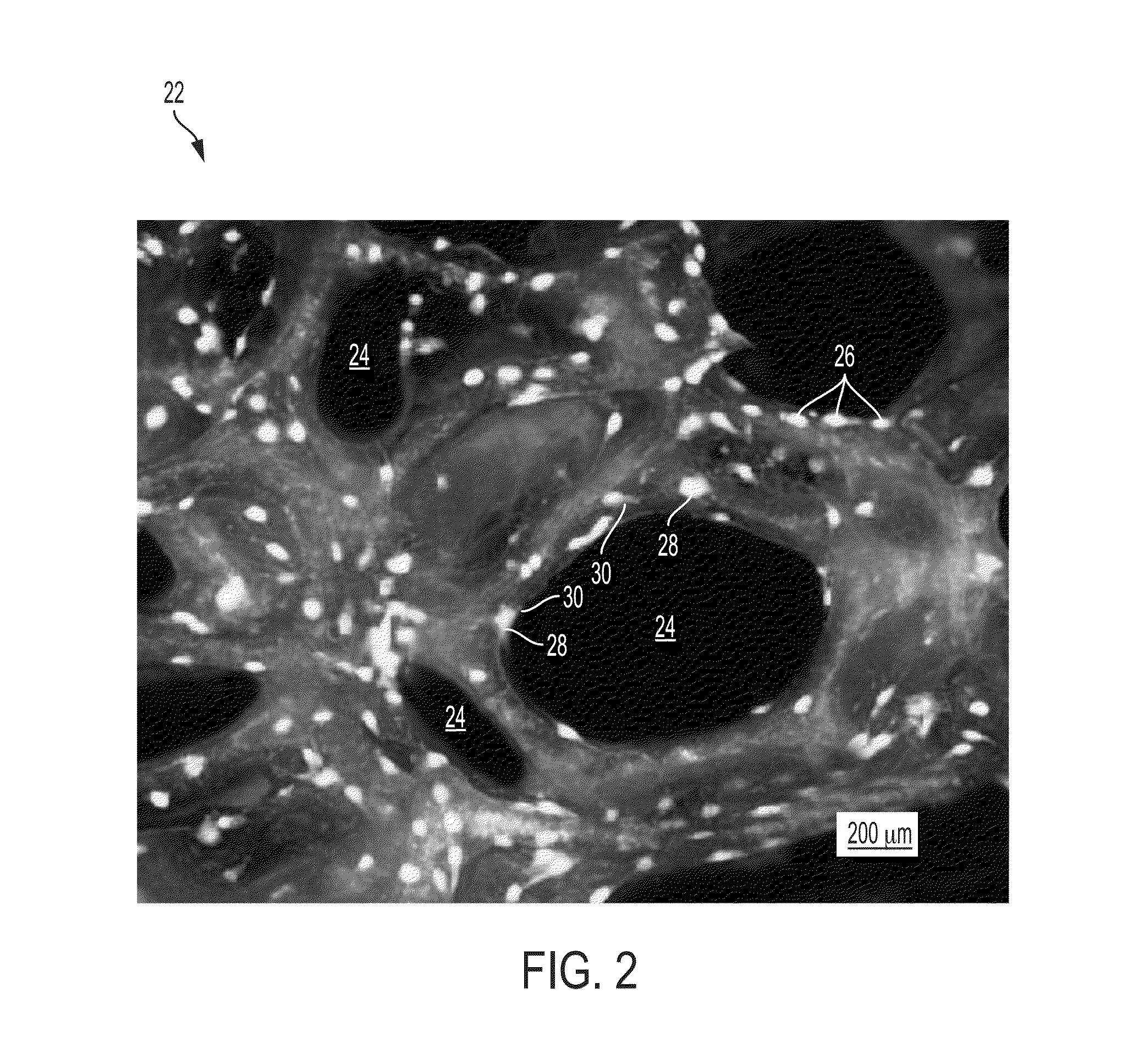Treatment of skeletal voids with implantable substrate hydrated with bone marrow concentrate
a technology of bone marrow concentrate and implantable substrate, which is applied in the field of medical devices and procedures, can solve the problems of bone substitutes, impractical use, pain and local donor site morbidity, etc., and achieve the effects of facilitating various cell types, facilitating cell attachment, and ensuring the viability of cells
- Summary
- Abstract
- Description
- Claims
- Application Information
AI Technical Summary
Benefits of technology
Problems solved by technology
Method used
Image
Examples
Embodiment Construction
[0038]The extracellular matrix of hard tissues is composed of two distinct phases, an organic phase and an inorganic phase. The inorganic portion of bone is comprised mainly of hydroxyapatite while the organic phase is primarily comprised of type I collagen and smaller amounts of other proteins. Structurally, although hard, bone is a porous material, with porosities of 50-90% in trabecular bone and 3-12% in cortical bone. By providing a substrate containing osteogenic progenitor cells, in combination with the biological binding cues from the organic phase as well as some of the mechanical rigidity seen in the inorganic phase, it may be possible to produce a fully functional device capable of supporting osteogenic differentiation as well as new bone growth. In certain embodiments, the organic phase contains growth factors and / or proteins that aid in the repair process.
[0039]Calcium phosphate based materials are a popular synthetic bone graft material because they have been shown to d...
PUM
| Property | Measurement | Unit |
|---|---|---|
| porosity | aaaaa | aaaaa |
| porosity | aaaaa | aaaaa |
| porosities | aaaaa | aaaaa |
Abstract
Description
Claims
Application Information
 Login to View More
Login to View More - R&D
- Intellectual Property
- Life Sciences
- Materials
- Tech Scout
- Unparalleled Data Quality
- Higher Quality Content
- 60% Fewer Hallucinations
Browse by: Latest US Patents, China's latest patents, Technical Efficacy Thesaurus, Application Domain, Technology Topic, Popular Technical Reports.
© 2025 PatSnap. All rights reserved.Legal|Privacy policy|Modern Slavery Act Transparency Statement|Sitemap|About US| Contact US: help@patsnap.com



